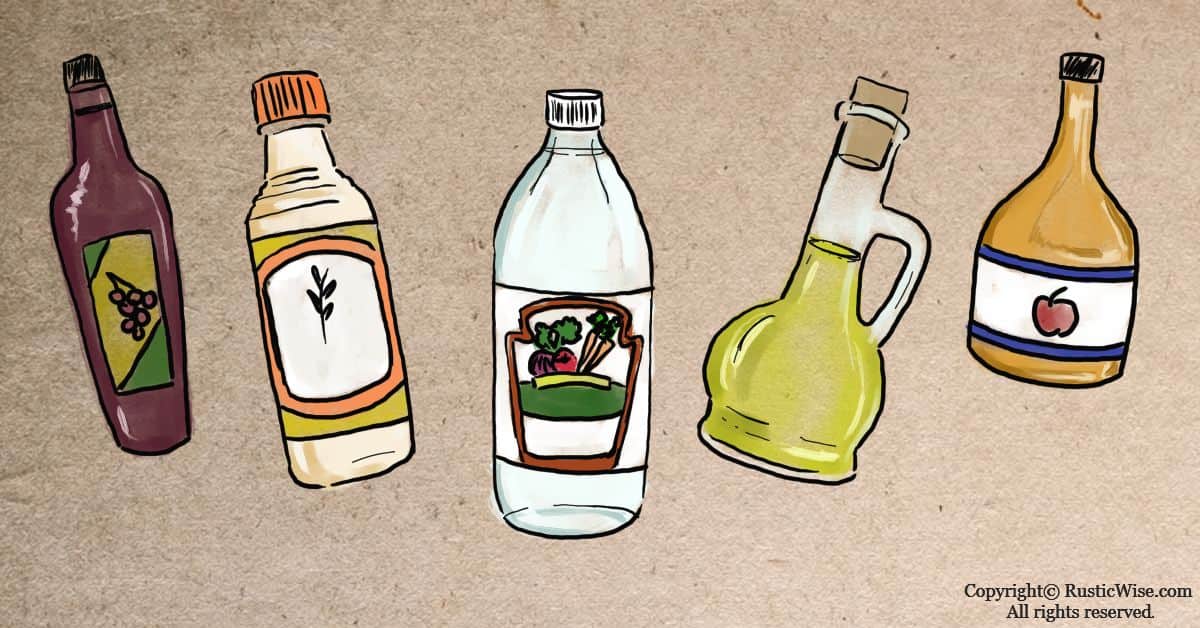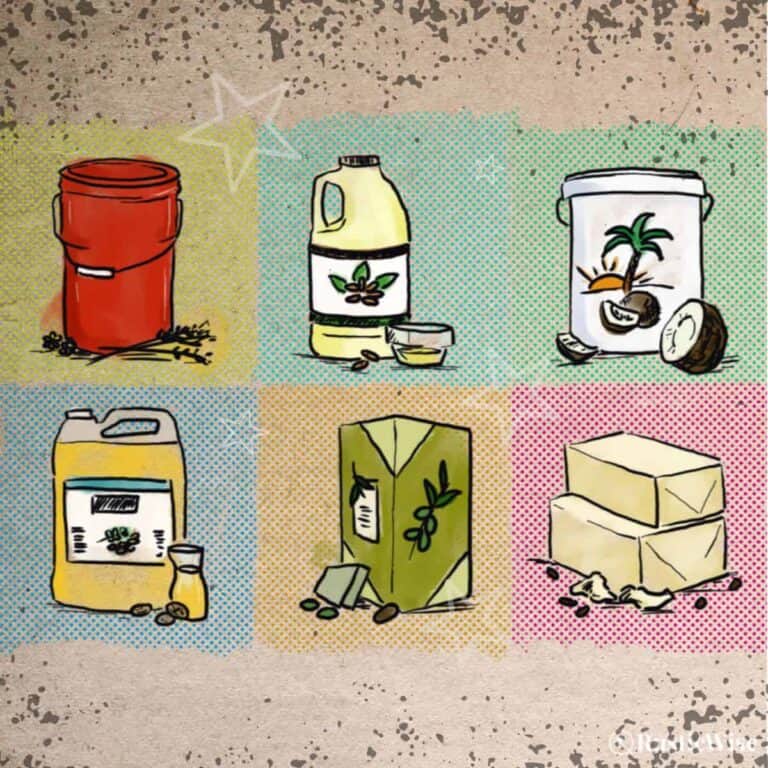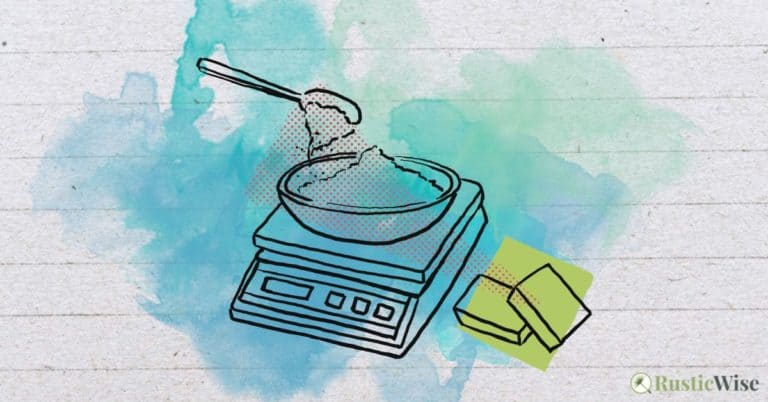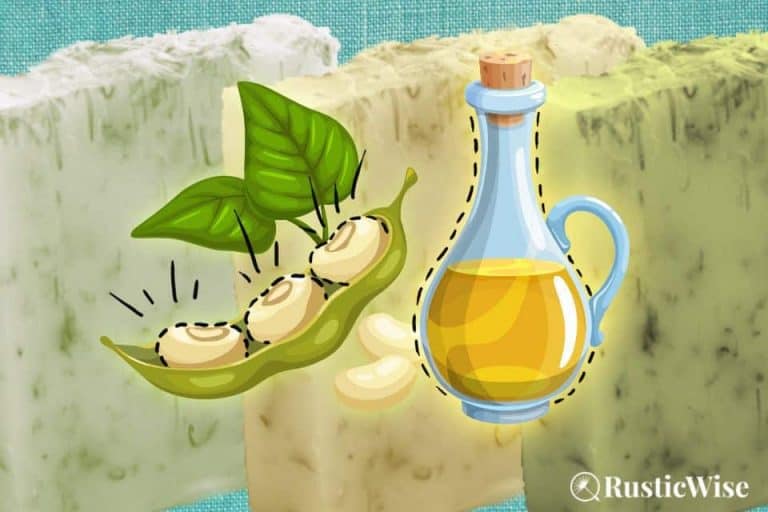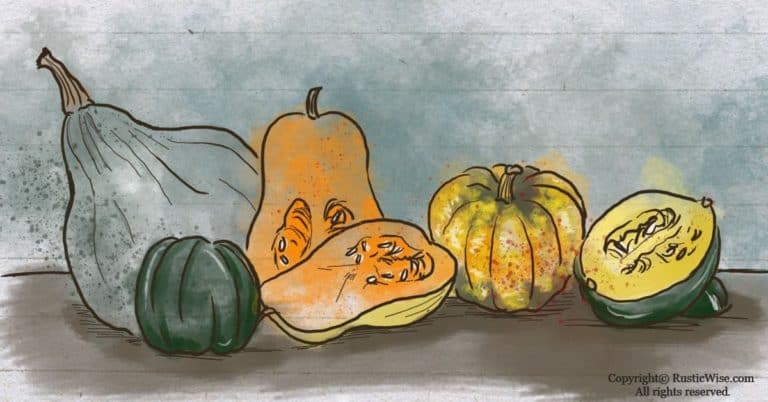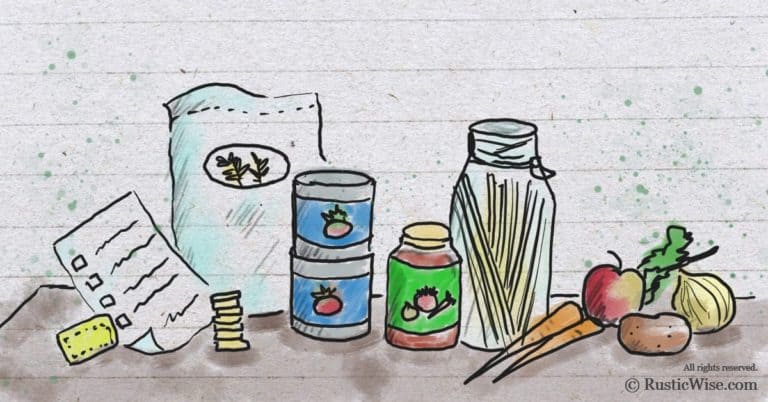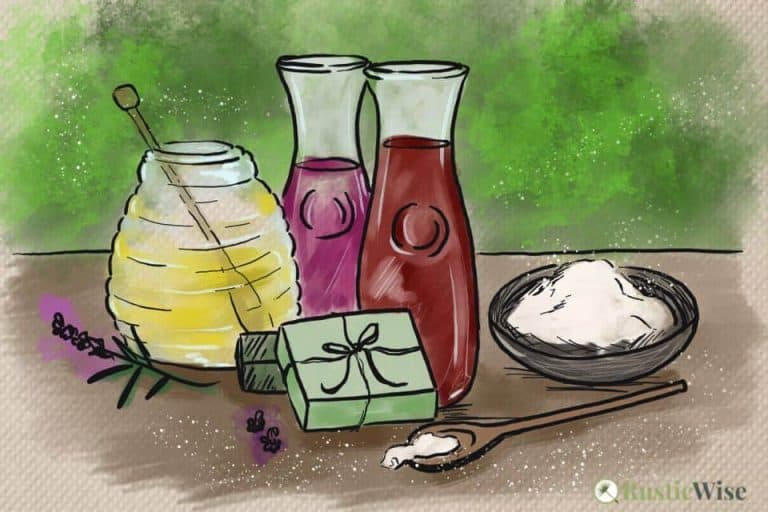Which Vinegar Is Best For Pickling: A Guide To Selecting the Right One
RusticWise is supported by its readers. When you purchase through links on our site, we may earn an affiliate commission. As an Amazon Associate, we earn from qualifying purchases. Thank You!
Pickling is a great way to preserve all of your favorite summer vegetables. But which vinegar is best for pickling? According to the National Center for Home Food Preservation (NCHFP), “white distilled and cider vinegars of 5 percent acidity (50 grain) are recommended.”¹
Vinegar plays a vital role in maintaining the proper acidity level needed for safe preservation. It’s important you don’t alter the amount of vinegar used in your recipe, and don’t use anything with less than 5 percent acetic acid to avoid botulism. As long as you’re following these guidelines, the type of vinegar you use is a personal preference.
When you think of pickling, cucumbers are probably the first thing that come to mind. But you can pickle all sorts of fruits and vegetables: asparagus, beets (beetroot), carrots, cherries, cranberries, peaches, peppers, and radish, and red onion are just a few.
There are many different types of this product available on the market. We’ll explore which type of vinegar is best to use when pickling vegetables, as well as how different types of vinegar affect the taste of your finished product.
What exactly is pickling vinegar?
A pickling vinegar is a type of white vinegar with a higher acetic content than regular varieties, generally around 7 percent.
However, the term “pickling vinegar” is loosely used and causes plenty of confusion for home canners.
In some circles, pickling vinegar refers to any vinegar with added salt and other spices and seasonings. The term pickle brine more accurately describes a seasoned vinegar.
You can search for pickling vinegar recipes online and find a smorgasbord of varieties. Most pickling recipes contain some variation of bay leaves, black pepper, cardamom, coriander, cinnamon, cloves, dill, garlic, mustard seed, and red pepper flakes.
Many people make their own pickling brine. Apparently you can buy some pre-made pickling vinegar with added spices in some places, but I’ve never seen any in my neck-of-the-woods here in Canada.
In other circles, pickling vinegar is considered a stronger type of vinegar than “regular” vinegar. Where I live, you can find Allen’s Pickling Vinegar which contains 7 percent acetic acid. You can also find Great Value pickling vinegar from Walmart.
One thing that’s not up for debate: as long as you ensure the label states at least 5 percent acetic acid, you can use whatever food-grade vinegar you like.
Tip: According to Pennsylvania State University, an acceptable range of acidity is between 5 and 7 percent for safe home pickling.²
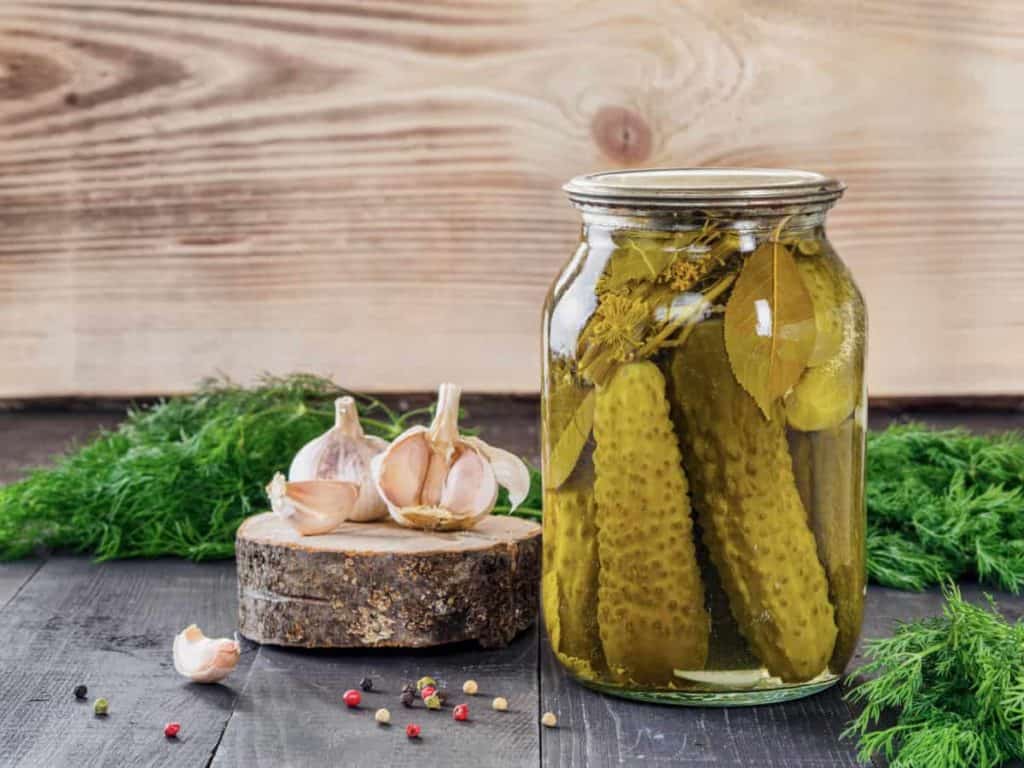
Which vinegar is best for pickling? It depends …
The two most commonly used and recommended types of vinegar for pickling are white distilled vinegar and apple cider vinegar. The type of vinegar you use will affect your finished product’s flavor profile. There’s really no such thing as a “best” vinegar as it largely depends on a few factors:
- Your personal taste preferences;
- Budget (white vinegar is the most budget-friendly ); and,
- The types of food you’re planning on pickling.
So long as you check the label to ensure at least 5 percent acetic acid, feel free to try a few different varieties when pickling to see what you like best. Use one type, or mix-and-match a few (although for best results, you may want to stick with the type of vinegar used in your recipe!).
Here are a few common varieties of vinegar:
- Distilled white vinegar: Yes, this is the normal bottle of white vinegar you can pick up at the grocery store. Made of distilled water and fermented grains, it lends a mouth-puckering profile to pickles. It’s inexpensive and doesn’t color pickled vegetables—a bonus especially if you’re pickling light-colored veggies like cauliflower or pickled onions. This is the best vinegar for most jobs. It’s a good, solid, versatile choice, particularly if you’re planning on doing a lot of pickling!
- Apple cider vinegar (ACV): More pricey than white vinegar, some people prefer ACV’s mellower flavor profile. Made from fermented apples, ACV has a slightly fruity flavor. Apple cider’s darker, golden color will affect the coloring of your finished product.
- Apple cider-flavor distilled vinegar: Made of distilled white vinegar with added apple cider flavoring. It looks and tastes just like ACV, so you can use it as such.³
- Balsamic vinegar: Very popular in cooking, but not so much for pickling or canning. This is because its typically dark coloring is not always great for canning, and it’s on the pricier side. Balsamic vinegar is made from unfermented grape juice and then aged in wooden casks. The flavor and quality of this dark vinegar varies greatly—some balsamic vinegar may set you back several hundred dollars! If this vinegar’s sweet-sour profile appeals to you, save it for pickling one or two of your favorite foods.⁴
- Malt vinegar: Made of malted barley, different varieties can range in color from almost white to dark brown. The same types of grains used to make beer are used for making malt vinegar, so they have a similar flavor profile: strong, with sometimes nutty or caramel notes. Some like it for pickling cucumbers; others may find the flavor overpowering.
- Rice vinegar: Made by fermenting rice wines, rice vinegar varies greatly in flavor and colors (white, red, and black). Rice vinegar from China tends to have a sharper, more sour flavor. Japanese rice vinegar is more mellow and mild. Some rice vinegars come pre-seasoned with a range of ingredients such as soy sauce, mirin, bonito flakes, and sesame to name just a few.⁴
- Wine vinegar: There’s white wine vinegar and red wine vinegar. Please check the label to ensure the proper acetic content (most wine vinegar contains between 4 and 6 percent acetic acid). The flavor of the wine vinegar varies widely depending on the type of wine used to make it. Most white wine vinegars are smooth and milder than regular white vinegar and ACV. Red wine vinegars will, of course, color your food (which may or not be a good thing).
- Champagne vinegar: Made with Champagne wine, it has a slightly mellower taste than white wine vinegar. While it tastes lovely, it’s on the pricier side, and can be hard to find at local grocery stores.
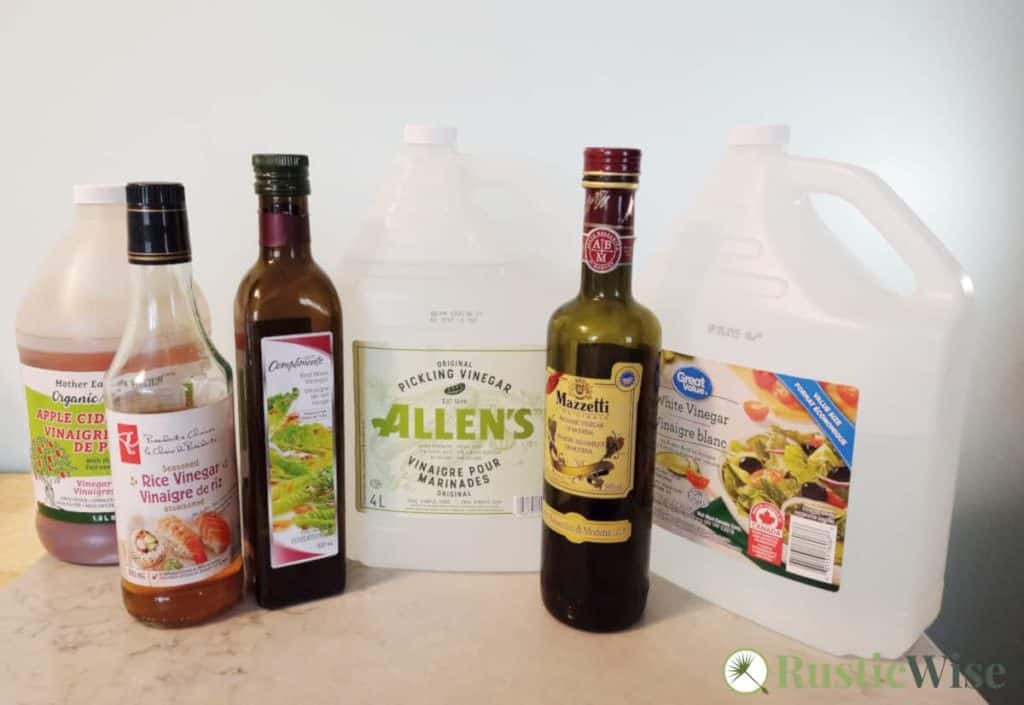
3 Types of vinegars NOT to use when pickling
Please don’t use the following types of vinegars when pickling:
- Homemade vinegar: Not recommended! While you may have toiled away on your delicious batch of homemade vinegar, save this stuff for cooking or salads. It’s really difficult to test the acidity of homemade vinegar, which is why commercial vinegars are the best option.
- Cleaning vinegar: Not recommended! Cleaning vinegar is meant for cleaning around the house and is not food-grade quality.
- Industrial vinegar: Not recommended! Used for a variety of industrial or heavy-duty cleaning purposes, industrial vinegars are most definitely not suitable for pickling purposes. The acetic acid content can be between 20–30 percent. This would pack a powerful punch!
Types of pickling methods
Whether you prefer dill pickles or bread and butter varieties, there are a few different ways to make cucumber pickles in jars:
- Refrigerator pickles: Made in just a day these are the quickest and easiest type of pickles! Cucumbers are sliced and raw-packed (a hot brine solution is poured over raw cukes). As the name suggests, these tasty treats need to be kept in the fridge. A refrigerator pickle has plenty of crunch!
- Quick pickles: Made just like refrigerator pickles, quick pickles have the added step of processing (typically in a water bath canner). This ensures the pickles are shelf stable for storage at room temperature.
- Fermented pickles: This method is the most time-intensive but produces the most flavor. The cucumbers are soaked in a brine solution with salt and spices which is then left to ferment for several weeks.
Check out our article on making pickled nasturtium seeds (capers).
Tip: To avoid cloudiness in your pickles (a common problem), stick with pickling salt or kosher salt.
The preserving power of vinegar
In order to safely pickle your favorite fruit or vegetable, you need to use the right amount of acid, sugar, and spices. To ensure a longer shelf life and to prevent botulinum toxins from growing, it’s vital to follow a reputable recipe.
Never alter the amount of vinegar used in a recipe. Some recipes call for the use of added water, while others require undiluted vinegar.
Botulinum bacteria grow more easily in a low-acid environment. Using the proper vinegar in the recommended amount increases acidity. Most pickled foods have a pH of around 4.6 or lower.⁵
Vinegar will create a pickling liquid that helps preserve your vegetables by killing off bacteria, yeasts, fungi, and other harmful pathogens.
Related questions
How long do refrigerator pickles last?
Most refrigerator pickles are best consumed within 2 to 4 weeks. The longer you keep them, the soggier they’ll get, so it’s best to enjoy them sooner!
Do you have to heat vinegar for pickling?
Most pickling recipes call for ingredients for brine (which includes vinegar, sugar, salt, and other spices) to be combined and heated to boiling. The hot brine is then poured over the jar’s contents. Heating the brine solution helps in several ways:
- To thoroughly mix and dissolve the sugar and other spices;
- To help unlock the flavors; and,
- To get a pickle-y texture.
Can you reuse leftover pickling juice?
If you have leftover unused brine that hasn’t touched any food, it’s safe to reuse. Just be sure to use this right away and use according to your recipe’s instructions.
Don’t reuse any pickling brine that has been cooked with other foods. If you have leftover pickle juice and you want to make a new batch of homemade pickles, don’t do it! The brine’s composition will have altered over time when in contact with food; the proper level of acidity may not be achieved for safe food preservation.
Instead, try using leftover pickle juice in cooking: add it to egg salads, or salad dressings!
Is white vinegar the same as pickling vinegar?
Yes and no. This seemingly straightforward question requires some explanation. Pickling vinegar is a type of white vinegar that typically contains around 7 percent acetic acid, compared to regular distilled vinegar which has 5 percent acetic acid.
Why some manufacturers make a different pickling liquid is beyond me. Some home canners say that the higher acidity in pickling juice adds extra tartness and flavor. (But personally regular white vinegar is plenty sour enough for me!)
As long as the vinegar you use in your recipe contains between 5 and 7 percent acetic acid, you’re good to go!
So, the difference between pickling vinegar and white vinegar is splitting hairs.
What’s the best vinegar for pickling beetroot?
Many traditional recipes use malt vinegar for pickled beets as it lends a slightly nutty, earthy flavor which complements the sweetness of beetroots. While you could use other types of vinegar, many find that white vinegar’s sharper flavor profile is a bit too much for beets.
Which is stronger: white vinegar or apple cider vinegar?
While both regular white vinegar and ACV contain similar acetic acid concentrations (usually between 5 and 6 percent), the flavor of white vinegar is stronger. ACV has a sweeter, fruitier profile.
👉 If you like this post, see our Ultimate Guide on How To Can Food. 🍎
Would you like more timeless tips via email?
Fun tips to help you live an independent, self-sustaining lifestyle. Opt-out at any time.


References
- National Center for Home Food Preservation (NCHFP), Preparing and Canning Fermented and Pickled Foods, https://nchfp.uga.edu/how/can_06/prep_foods.html. Accessed April 2023.
- University of Minnesota Extension, Pickling basics, https://extension.umn.edu/preserving-and-preparing/pickling-basics. Accessed April 2023.
- Pennsylvania State University, Advice about Vinegar, https://extension.psu.edu/advice-about-vinegar. Accessed April 2023.
- Restaurant Business, Know Your Vinegar, https://www.restaurantbusinessonline.com/know-your-vinegar. Accessed April 2023.
- National Center for Home Food Preservation (NCHFP), Ensuring Safe Canned Foods, https://nchfp.uga.edu/how/general/ensuring_safe_canned_foods.html. Accessed April 2023.

Author: Theresa Tesolin
Theresa is co-founder of RusticWise. She helps people unleash their inner DIY spirit by encouraging them to get dirty and make or grow something from scratch.

